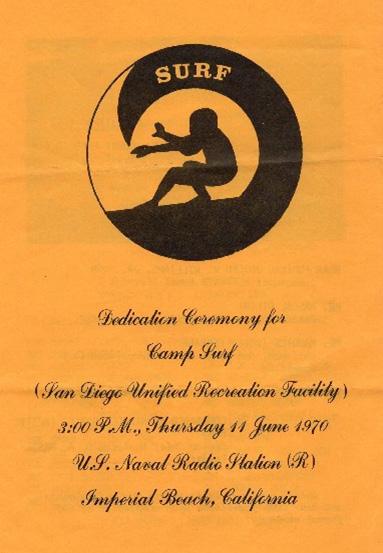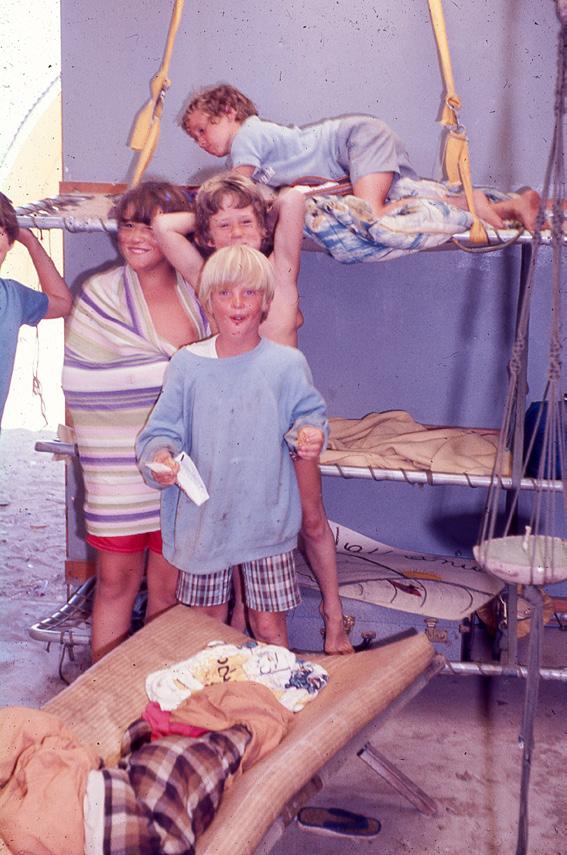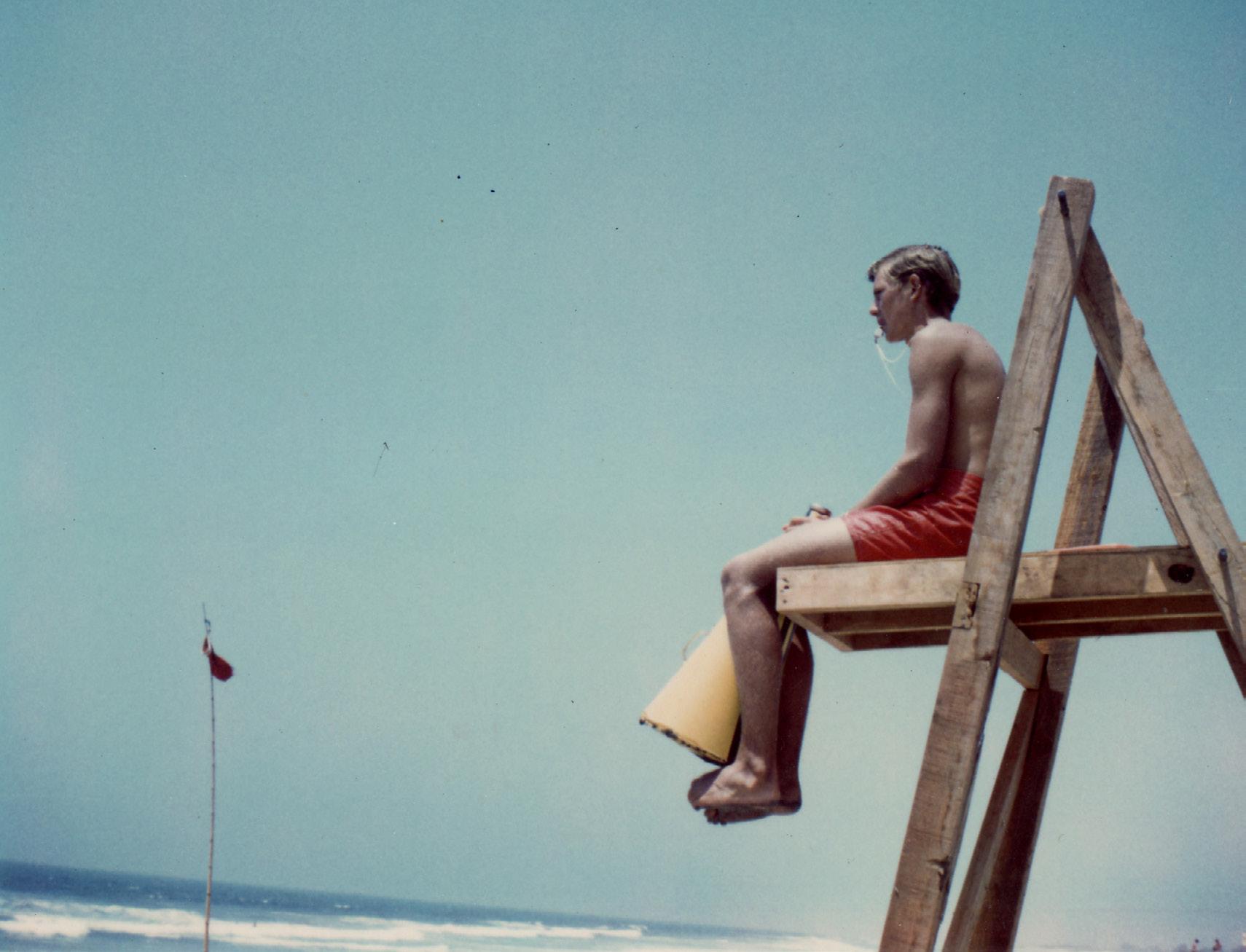
6 minute read
GETTING STARTED 1969–1979
GETTING STARTED 1969–1979
PEOPLE
Advertisement
It took a lot of people working together to develop an overnight camp. Dick Mason started as the first Director of YMCA Camp Surf in 1970 and was instrumental in developing the first programs and improving facilities. Val Hoy Jr. served as the Camp Executive Director from 1970-1973 and was responsible for turning around and growing the camp department from one to three camps. He was replaced by Fred L. Bradley, as Executive director who handed over the reins to John Marciano in 1977. John served until he was appointed as Senior Vice President of Facilities for the YMCA of San Diego County. Dick resigned as the YMCA Camp Surf Director after the summer of 1975 and was followed by James Baker.
Board members also played key roles in starting YMCA Camp Surf. Captain Vincent L. Cassini Jr. relieved Captain Fargo as Commanding Officer Fleet Training Center in 1969. Captain Cassini joined the YMCA Camp Board as Chairman of the Camp Surf Committee that same year. Captain Fargo, who retired from the Navy in 1969, continued to support YMCA Camp Surf and Chaired the Camp Committee in 1974. During this period, the Camp Committee was comprised of well-known civic leaders that included Art Jacobs, George Carter Jessop Jr. , Milton Cheverton, Junior Todd, Tim Reed, Bob Johnson and several retired senior Naval Officers.





PLACE
It is almost unbelievable that such an incredible beachfront location was found, and that starting a camp was possible! The Navy and YMCA signed a license agreement in May of 1969 to establish a waterfront camp on Navy-owned land at the NRRF, just north of Imperial Beach. Opening day ceremonies took place on June 21, 1969 to showcase the YMCA camp plans as a waterfront site for non-profit organizations. The camp hosted its first groups in August 1969.
The official dedication of YMCA Camp S.U.R.F. (an acronym for “San Diego Unified Recreation Facility”) by Navy and community officials took place one year later, June 11, 1970. Although Navy involvement and support was evident from the start, the new camp’s existence was threatened in 1972. The land leased to the YMCA was listed as “excess”, and the Nixon Administration was looking for excess military land to sell off. Thankfully, extensive lobbying by the County Board of Supervisors and Congressional leaders saved the property for the YMCA and youth of San Diego County. By 1977 the acronym was dropped, and the camp was known simply as YMCA Camp Surf.
Most of the early facilities were excess military structures and equipment brought to YMCA Camp Surf and reassembled on site by Navy Seabees and volunteers. The first lifeguard tower and other buildings were moved to the camp from Border Field, a deactivated World War II Navy Airfield.


Surplus 16-person military tents were obtained from the Marine Corps at Camp Pendleton, the Seabees poured concrete slabs for the tents, and they became the first permanent overnight sleeping facilities at YMCA Camp Surf. The Seabees also built the first permanent bathrooms. In 1974, Korean War Vintage Quonset huts were moved to the site and rebuilt on the slabs formerly occupied by the military tents. Art Jacobs, a Camp Committee Board Member, generously contributed to numerous facility improvements that included a new store, craft center, and most notably the kitchen and outdoor dining patio. The original kitchen, built in 1970, remained part of the McKinney Oceanfront Center built in 2014.















PROGRAMS
A variety of programs were tried and tested in the unique ocean environment that YMCA Camp Surf offered. In 1969 and 1970, day use programs were offered, and the first overnight coed program launched in the summer of 1971. Only two 2-week sessions were offered that year. In 1972 Camp Director Dick Mason developed three programs. Resident Camp was for children age 8-11 which had a capacity of 60 boys and girls. Only five 6-day long sessions were offered that year. Watermen was for 12-16 year old boys and focused on surfing, mat surfing, skim boarding, swimming and sailing Catamarans in the surf. SCUBA was the only teen program for the 1972 season. It was for ages 16 and up and was offered by Commander Jim Williams, a NAUI dive instructor.
In 1973 Resident Camp evolved to include ages 8-13 and Ocean Explorers was launched for ages 13-16. The Ocean Explorers program was 10 days long and included Hobie Cat sailing and day trips to popular skin diving and surfing spots along the San Diego and Orange County coast, even venturing into Baja California, Mexico.

By 1975, YMCA Camp Surf offered all co-ed programs including nine 6-day sessions of Resident Camp for ages 8-12, five 10-day sessions of Waterman for ages 10-12, and three 17-day sessions of Ocean Explorers ages 13-16. In 1977, programs were expanded once again to provide even more specialized activities. A 10-day Waterman II for ages 10-12 was added to broaden and expand the skills learned in Waterman I. Additional programs included a 10-day Blue Water Sailing Camp using Hobie Cats in Glorietta Bay and in the surf, and a Surf & Skin-diving Camp. Finally, throughout the 1970’s, YMCA Camp Surf conducted Leadersin-Training programs that ranged from 10 to 21 days in length. The ages ranged from 14-18 and included youth counseling, first aid, swimming, lifeguarding, surfing, water sports, and skill development to teach camp activities.
























